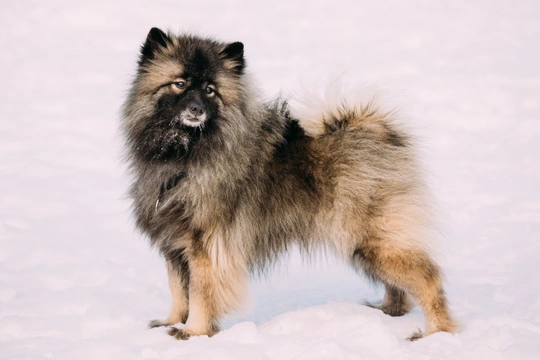Pets
Pets for studWanted petsBreedersAccessories & services
Knowledge hub
Support
Support & safety portal
Primary Hyperparathyroidism (PHPT) in the Keeshond
Primary hyperparathyroidism (PHPT for short) is a hereditary health condition that can affect dogs, and that occurs when the parathyroid glands produce too much of their parathyroid hormone. It is important to understand the distinction between the parathyroid glands and the thyroid glands in this case, as the two are often confused-the parathyroid glands are located very close to the thyroid glands (in the dog’s neck) but are responsible for producing a different type of hormone, distinct from that of the thyroid glands.
Parathyroid hormones are responsible for balancing the blood’s calcium and phosphorous levels, and in healthy dogs, adjusts automatically to allow calcium from the bones to be utilised within the bloodstream and body tissues. However, in dogs suffering from primary hyperparathyroidism, an excess of the hormone responsible for this is produced, leading to overly high blood: calcium levels.
Primary hyperparathyroidism is a hereditary condition, which means that it is not contagious and cannot be caught or transmitted from dog to dog. The only way for a dog to develop primary hyperparathyroidism is by means of inheriting two copies of a gene mutation (one from each of their parent dogs) that cause the active form of the condition.
In order to limit and curb the wider dissemination of the condition across dog breeds, The Kennel Club has identified breeds that are at risk for the condition, and oversee a testing scheme to allow the owners of potentially at risk breeds to test their dogs for the markers of the condition prior to breeding.
In this article, we will look at primary hyperparathyroidism in dogs in more detail, including what sort of dogs can be affected, how the heredity of the condition works, and how you can get your dog tested. Read on to learn more.
More about primary hyperparathyroidism
Canine hyperparathyroidism comes in two forms: primary and secondary. The primary form of the condition is hereditary, and occurs when either one or both of the parathyroid glands begin to produce an abnormal excess of the parathyroid hormone, which can occur concomitantly with cancer of the parathyroid gland. This leads to overly high levels of calcium within the bloodstream and bodily tissues, and usually presents in older dogs.
The secondary form of the condition is not hereditary, and occurs when the dog in question does not receive enough dietary calcium.
What sort of dogs can be affected by the condition?
As a hereditary health condition, primary hyperparathyroidism has been identified as present within the gene pools of certain breeds with a high enough rate of occurrence to pose a potential threat to the wider health and wellness of those breeds as a whole, and it is these breeds for which pre-breeding testing is strongly advised.
The breed known to be at the highest risk for the condition in UK dog populations is the Keeshond, but if you own a dog of another breed and want to find out about their risk factors, you can search by breed via The Kennel Club.
It is important to note that any dog that has one Keeshond parent or potential Keeshond ancestry may be at risk of inheriting the condition too, and so it is worth bearing this in mind if you own or are considering buying a mixed breed dog.
How does the heredity of the condition work?
Unlike many hereditary canine health condition, primary hyperparathyroidism is caused by an autosomal dominant gene mutation, which means that in order to inherit the condition, a dog need only inherit one copy of the mutated gene that causes the condition, from either their dam or their sire. This does not necessarily mean that a dog that inherits one copy of the mutated gene will definitely inherit the condition too, but they have a 50% chance of doing so. If both parents carry the gene mutation, the odds of course worsen significantly for their offspring.
This can also lead to a litter containing a mixture of affected and unaffected puppies.
This autosomal dominant means of transmission means that in nature, the condition would soon spread widely across dog populations, and would soon become prevalent and not die out naturally.
This makes selective breeding or only clear dogs of the Keeshond breed so important, in order to prevent the condition from being passed on from dog to dog ever more widely.
How to get your dog tested
Testing for primary hyperparathyroidism in the Keeshond breed is very important, to prevent the condition from being disseminated widely throughout the breed as a whole. Dogs that carry the gene mutation for the condition should not be used for breeding.
A simple DNA test is all that is needed to return the status of any given dog, and a list of laboratories that offer the test can be found on this page of The Kennel Club’s website.



